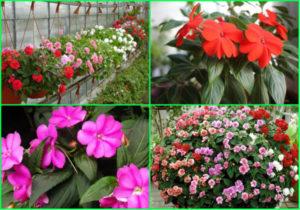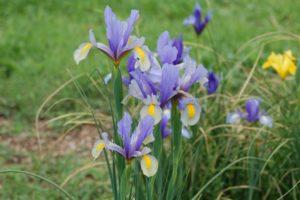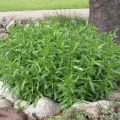Planting, growing and caring for cannes outdoors
Cannes are distinguished by their attractive appearance; planting and caring for plants in the open field is not difficult. It is enough just to follow the recommendations, water and feed the plant in a timely manner. The culture does not tolerate low temperatures, so proper flower care in autumn will keep the plant healthy for the next year.
Content
- 1 Features of cannes garden
- 2 Requirements for growing conditions
- 3 Growing cannes in the garden
- 4 How to care for your culture
- 5 Preparing Cannes for winter
- 6 How to store cannes bulbs in winter?
- 7 The nuances of care depending on the growing region
- 8 Classic flower problems and treatments
- 9 Prevention
- 10 Flower reproduction methods
Features of cannes garden
Culture has a unique appearance and can be a decoration for any garden plot. Cannes has the following features:
- The roots of the culture are large. They grow not only in depth, but also in width, therefore, when planting, this criterion must be taken into account.
- The stems are tall and can grow up to 3 meters.
- The stems are firm and fleshy.
- The leaves are in the shape of an oblong oval.
- The stems and leaves are highly nutritious and can be used as feed raw materials.
- The inflorescence is large, bisexual, can be red, orange, pink and white.
The flowers can be bicolor, which is popular with modern gardeners. When planting a plant, it must be borne in mind that cannes prefer open areas and a large amount of space.
Requirements for growing conditions
In order for the plant to please with its flowering, it is necessary to properly observe the care and method of growing the crop.
Illumination
The plant prefers sunny places. With a lack of sun, the plant reduces its development and does not bloom. The crop is not planted near large buildings, which may obstruct sunlight. When planting seedlings on windowsills, it is necessary to give preference to the south side.

Temperature regime
The plant does not tolerate low temperatures and may die. The flower begins to develop only after the air temperature reaches 22 degrees.
Required soil composition
The flower prefers nutritious soil. In order for the flower to develop well and bloom profusely, it is necessary to mix two parts of the soil with one part of humus, wood ash, peat and sand.Such a composition will accelerate the development of the root and will saturate the plant with the necessary components during the season.
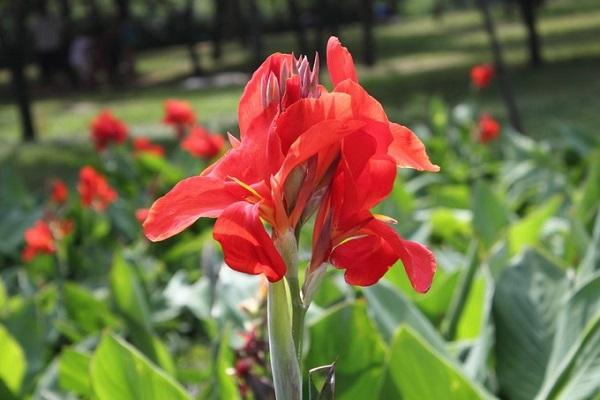
Growing cannes in the garden
In order for the flower to be grown in the open field and to decorate garden plots, it is necessary to observe the peculiarities of care.
Sowing cannes seeds
In order to use seeds as planting material, you must first perform the following steps:
- Treat the seeds with boiling water and place in a thermos. This will soften the hard shell and speed up the germination process.
- The material is planted in mid-February in a container for seedlings, seedlings appear in 20-25 days.
- After the emergence of shoots, it is necessary to place the pots in partial shade and in a cool place no more than 16 degrees.
Flowers are left in a cool place until they are planted in open ground.

When to plant cannes in open ground
It is necessary to plant flowers in open ground after there is no risk of frost. Planting crops in open ground is carried out on May 6-9, when the ground is fully warmed up. If weather conditions are favorable, planting can be carried out in mid-April, however, such beds are covered with plastic wrap at night.
How to care for your culture
Caring for cannes requires compliance with some features that will allow you to properly grow a flower healthy.
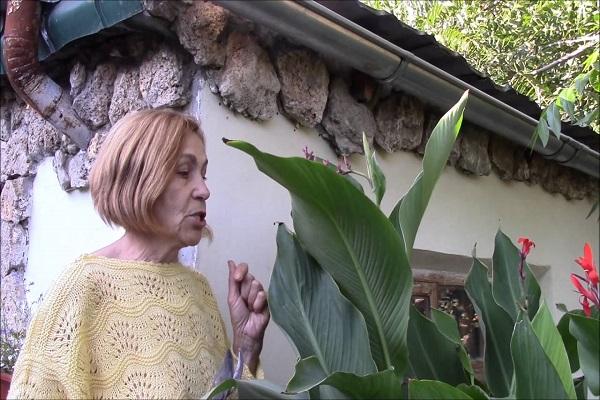
How to properly water cannes
The plant requires moderate watering, excessive moisture can lead to the formation of pests and diseases. Drainage is used to prevent water from accumulating during the planting of flowers in open ground. Water the plant every two days in small quantities.
Important. The plant may react negatively to watering with cold water. Therefore, irrigate the culture with warm water heated in the sun.
Fertilizing and feeding cannes
The appearance of flowers depends on the amount of nutrients in the soil, therefore feeding is carried out regularly. After transplanting seedlings into open ground, it is recommended to apply nitrogen fertilizers, potassium and phosphorus are used before the formation of inflorescences, such substances increase the duration and abundance of flowering. Organic fertilizers can also be used in the middle of the season. Most often it is humus or bird droppings, which are mixed with water in a 1: 5 ratio.
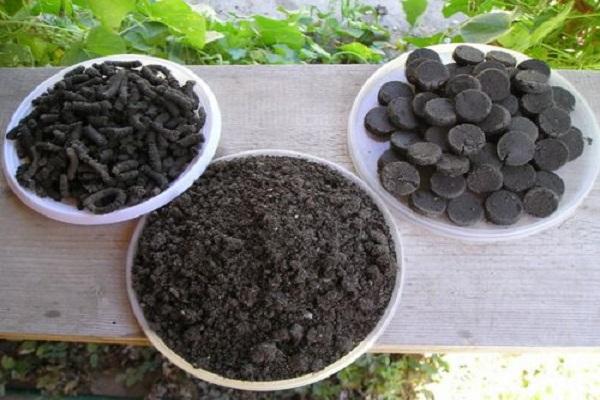
Cannes pruning
In order for the culture to retain its decorative appearance, it is necessary to regularly prune. All faded inflorescences and damaged leaves are removed from the plants. After the culture has completely bloomed, the stems are removed and the flowers are prepared for winter storage.
Preparing Cannes for winter
The culture does not tolerate a drop in temperature, so it is necessary to carry out proper harvesting before the onset of frost. In order for the planting material to be preserved throughout the winter:
- From mid-August, the watering regime is reduced to 1 time per week.
- In September, humus is introduced to saturate the roots with the necessary minerals for further storage.
- Bushes will huddle as temperatures begin to drop, reducing the risk of plant damage.
- At the end of September, the stems are cut at a height of 15 cm from the ground.
It is not recommended to leave the stems, they consume additional nutrients and lead to depletion of the roots.
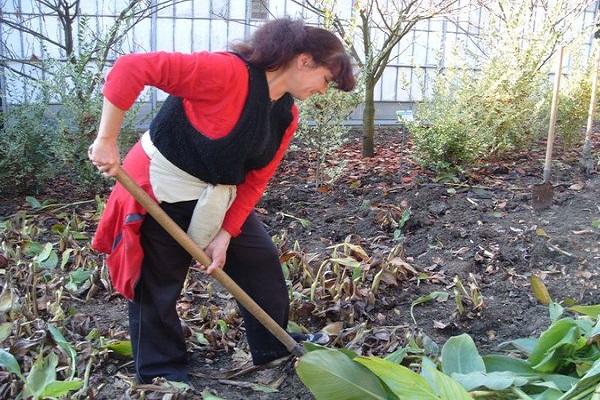
Timing of digging out the bulbs
Digging of canna roots is carried out in the fall before the onset of severe frosts. The period of digging out the roots from the soil depends on the weather conditions. Most often, the procedure is carried out in early October. The plant, along with a lump of earth, is removed from the ground and placed in a previously prepared container.
How to store cannes bulbs in winter?
After the roots are dug out of the ground, they must be dried in the shade for several days.During this time, it is necessary to prepare a storage place and a container where the roots of the plant will be placed. After the containers are prepared, you must carefully examine the roots for rot. The remains of the soil are not removed, it is also not recommended to wash the planting material.
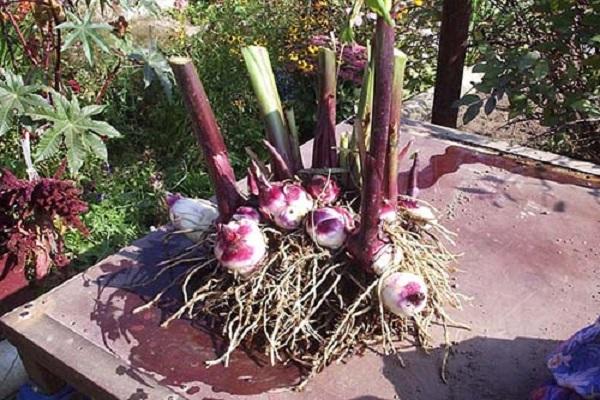
In room
At home, the canna is stored in a cool room, for this, the plant is dug out of the ground and dried for 2-3 days, after which the root is sprayed with a manganese solution and placed in a box. From above, the planting material is sprinkled with peat and left until spring.
We save the plant with germination until spring
It is recommended to store cannes in pots until spring. The dug out plant, along with a lump of earth, is placed in a pot and brought into a cool room. For example, on the veranda, the culture hibernates in its usual conditions. You can also store the plant on a windowsill, periodically moisturizing the soil. Indoors, the air temperature should not exceed 13 degrees. Gradually, buds will form at the root, which will sprout in the spring.
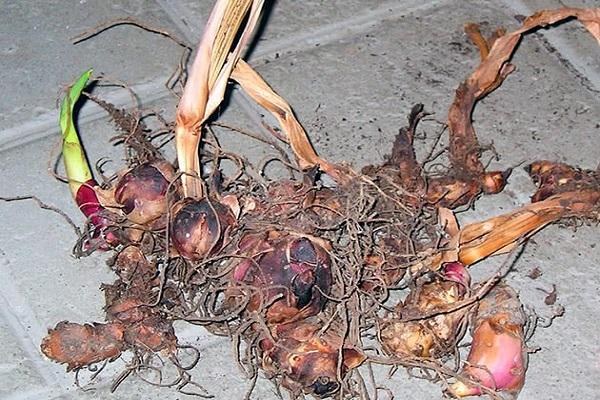
In a refrigerator
The culture can be overwintered in the refrigerator in the vegetable compartment. For this, canna roots are dug out and washed with water. After that, the planting material is dipped into a manganese solution for 5 minutes and laid out in a warm room to dry. After the roots are dry, they are placed on damp paper and wrapped. The bundle is placed in a bag and sent to the refrigerator until spring.
In the basement or cellar
You can properly store the tubers using the basement. To do this, you need to properly prepare the room:
- remove all unnecessary from the basement;
- remove mold from the walls;
- treat the room with an antifungal drug.
The dug out plants are dried for several days, after which the remains of the soil are removed from them. The tubers are placed in a wooden box and covered with peat or humus. From above, the boxes must be covered with cloth or paper.
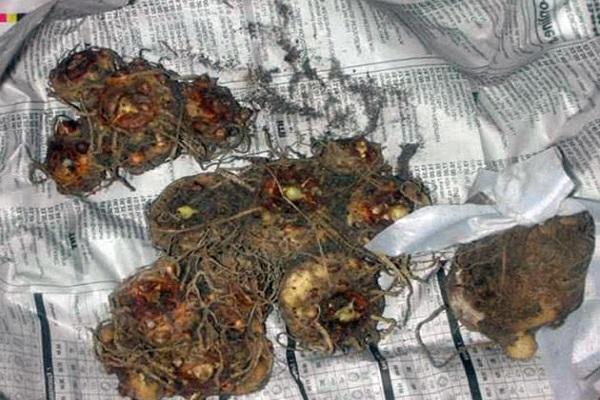
Storage in pots
This type of storage of culture indoors allows you to admire the flower throughout the entire time. In order to use this technique, you must prepare a pot of the appropriate size. The plant in mid-September is dug up along with the stem and transplanted into a pot. The culture pot is placed indoors on the sunny side.
In order for the flower not to die, care must be taken regularly, watering and feeding. Most often, cannes bloom until December, after which they go into a state of rest, in which case it is necessary to reduce the mode of watering the flower.
The nuances of care depending on the growing region
The landing period in the Moscow region is mid-May. The culture sprouts much faster and adapts to a new place of growth. Seeds can be planted in the ground without prior germination.
Planting and caring for cannes in Siberia and the Urals requires more careful efforts. The plant is recommended to be grown at home and planted in open ground only in mid-June. However, even with such a late planting time, regular shelter of the seedlings at night is required.

Classic flower problems and treatments
Like all types of flowers, cannes have a large number of diseases that can lead to a lack of color and complete death of the plant.
Viral diseases
Diseases of the viral type rarely form on the plant, but in the absence of proper care and a low amount of nutrients, the plant weakens and can be attacked by viruses.
Most often, the following types of viral infection can occur on a plant:
- Cucumber mosaic. This type of disease is carried by harmful insects. Also, improper care and the presence of weeds contributes to the transmission of the virus. The virus spreads rapidly through healthy plants and infects the entire area. To combat viral infection, preventive measures must be taken.When infected, the disease does not respond to treatment, and the damaged culture is eliminated. In order for the virus not to manifest itself, it is necessary to fight aphids in a timely manner and disinfect all garden tools before processing the crop.
- Variegation - the virus manifests itself in black spots that form on the leaves and stems. In the absence of timely treatment, it slows down the growth of plants and leads to a decrease in the formation of buds. To remove this type of disease, it is necessary to remove the damaged leaves and sprinkle the cut area with charcoal or ash.
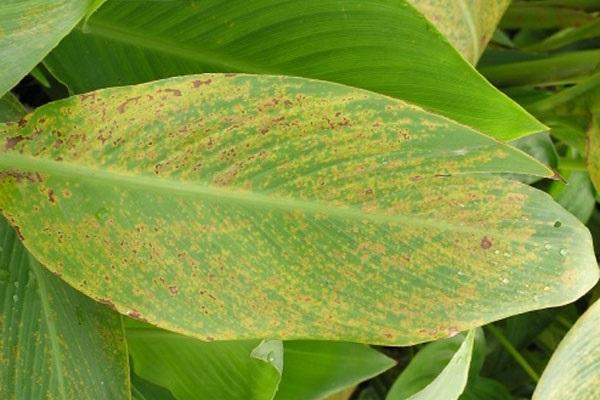
Viral diseases are very difficult to treat, therefore, after planting in the ground, it is necessary to take preventive measures.
Getting rid of the fungus
Among fungal diseases, the following should be distinguished:
- Rust fungus - appears with frequent watering. It appears in the form of spots on the leaves of brown color. The affected plant dries quickly and dies off. To prevent the disease, it is necessary to observe proper watering and regularly loosen the soil.
- Gray rot - appears in the form of plaque on the root and stem. The reason for the formation of this type of disease is soil moisture. The infected plant becomes covered with brown spots, the leaves quickly turn yellow and fall off. To reduce the fungus, it is necessary to maintain the distance between the plants and water directly under the root.
Phytoplasmic disease
The disease manifests itself most often after an attack of harmful insects, leafhoppers. It is manifested by yellowing of the leaves and deformation of leaves and inflorescences. When the disease appears, it cannot be completely cured, however, the use of chemicals with chlorothalonil prevents the formation of the problem.

Leaf rollers
The pest very often affects the plant. On the leaves of the cannes, you can observe small larvae, which provoke the appearance of holes in the leaves. The pests feed on the leaves and cause them to turn yellow.
The presence of pests is manifested by the following symptoms:
- the appearance of black spots on the plant;
- the presence of butterflies and small larvae;
- leaves become lethargic and curl into a tube.
To remove the pest, you can use special chemicals, such as "Fitoverm".
Thrips
The pests are small and immediately invisible on the plant. Insects and their larvae feed on leaves and stems. With a large accumulation of pests, the plant withers and dies. To remove thrips, it is necessary to plant marigolds around the perimeter, as well as spray the plant with such preparations as Actellik, Vertimek.
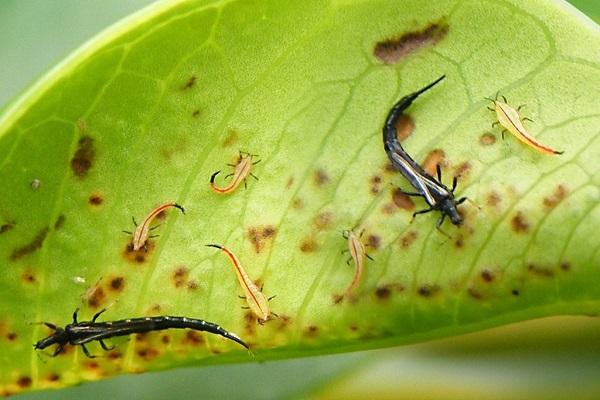
Spider mite
The pest feeds on plant sap and infects not only the leaves, but also the stems of the crop. When infected with a tick, a cobweb appears, and the plant becomes weak. Places affected by a tick have a large number of holes and gradually die off. To remove the pest, it is necessary to remove the damaged areas and treat the plant with the following preparations: "Fitoverm", "Aktofit".
Important. In order for the plant not to undergo this type of disease, it is necessary to use phosphorus and sulfur fertilizers..
Prevention
In order for the plant not to be exposed to diseases, prevention methods should be followed:
- timely remove weeds that can act as a source of infection;
- regularly loosen the soil for air circulation;
- when the first symptoms of pests appear, it is necessary to use chemicals;
- treat the roots with an antiseptic before planting.
The best way to fight disease is to maintain proper crop care. Timely and correct watering will preserve the plant and promote long-term flowering.
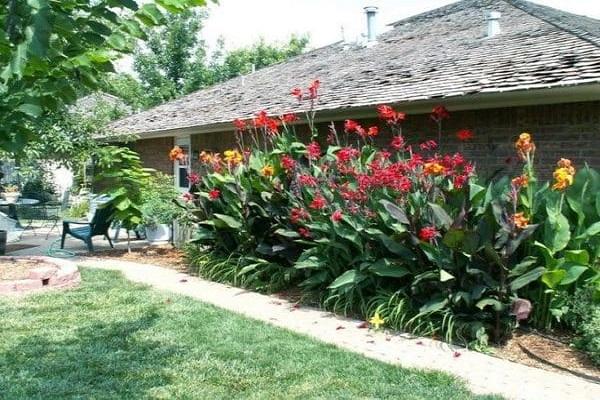
Flower reproduction methods
The plant can reproduce in several ways. The choice of breeding method depends on the personal preference of the gardener.
Rhizome division
One of the simplest methods of culture propagation. For use, it is necessary to prepare the root on which there will be shoots. The root is split into several pieces. Each segment must have at least 2 buds. After the root is cut, the cut should be treated with manganese or wood ash.
Parts of the rhizome are placed in a warm place to awaken. Every 2-3 days, the roots are sprayed with warm water. Parts of the root must be placed in a mixture of peat and sand for two weeks. This period is sufficient for additional root processes to develop and the bud to sprout. Sprouted root parts are placed in open ground and covered with plastic wrap. So that the flower does not have to be re-planted, a distance of at least 60 cm between the holes is maintained during planting in the ground.
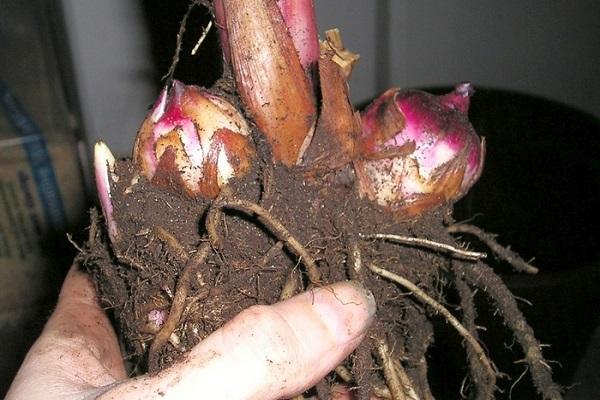
Seeds
Cannes seed propagation is used very rarely and can contribute to the emergence of new colors and plant forms. In order to plant a flower in open ground in spring, the seeds should be germinated. The seeds can be purchased at a specialty store or collected by yourself. Seeds are harvested after the plant has fully bloomed and formed a seed box. The seeds are large and hard shell. They rarely sprout without presoaking.
After the planting material is treated with boiling water and placed in the ground, it is necessary to regularly water the holes. Seeds are planted in pots and only after the emergence of seedlings is planted in open ground.
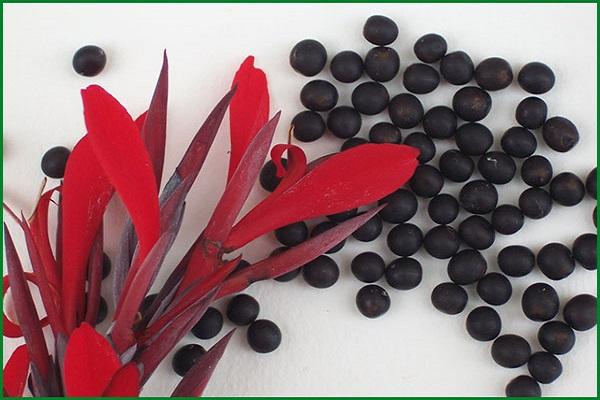
Cannes is one of the unique flowers that can be used to decorate the garden. The plant requires compliance with certain rules for care, otherwise it is often affected by diseases and pests, cannes can be grown not only in the open field, but also at home. The grooming process is no different, but the flower is large and takes up a lot of space, which often causes discomfort.
